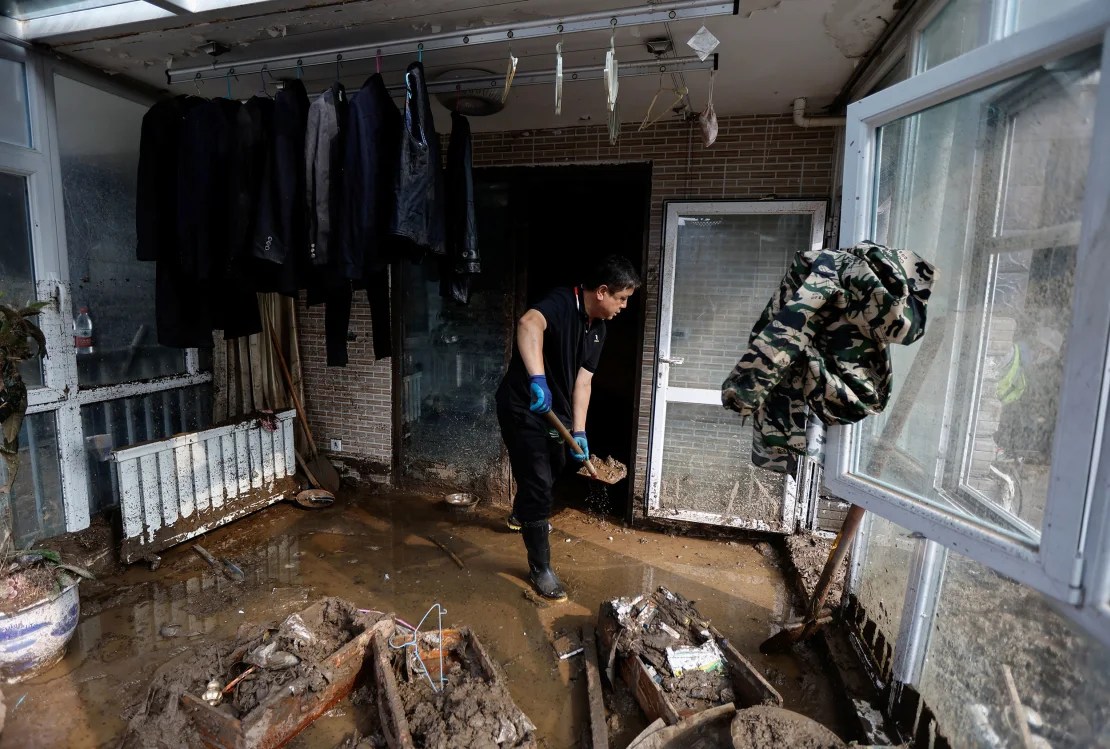(CNN) — Human activities are sinking beneath the feet of millions of people in China's major cities, putting the country's coastal areas at risk of flooding and rising sea levels, new research shows.
Nearly half of China's urban areas, home to 29% of the country's population, are sinking at more than 3 millimeters (about 0.12 inches) per year, according to a survey. study Published this Thursday in the journal Science. 270 million people live on sinking land.
Meanwhile, 67 million people live on land that sinks 10 millimeters (0.4 inches) deeper every year.
Widespread groundwater extraction in China is one of the main factors behind the sinking, the researchers said. Cities are pumping water from underground aquifers faster than they can be replenished, a situation exacerbated by droughts, which in turn are fueled by climate change. Excessive pumping lowers the water table and submerges the overlying land.
Land is sinking as the weight of cities increases. The weight of sediments that accumulate over time, and the pressure exerted by heavy buildings on the ground, can continue to sink the land and naturally compact the soil.
Land subsidence is not just a problem in China. In the United States, dozens of coastal cities such as New York City are sinking. In the Netherlands, 25% of its land is submerged below sea level. And in Mexico City, the world's fastest-sinking city, land is sinking at a rate of 50 centimeters, or nearly 20 inches, a year.
Coastal areas where sea level rises at the same time are generally worst affected by subsidence. This combination exposes more land, people and property to devastating floods.
A quarter of China's coastlines will sink below sea level and projected sea level rise will cause the area to suffer major damage and put lives at risk, the study said. Areas around Tianjin, Shanghai and Guangzhou are more exposed to both problems, the study found.

As oceans rise and coastlines sink, vast swaths of land will be exposed to devastating floods from coastal storms and coastal erosion. Credit: Dingshu Wang/Reuters.
But some coastal areas in China have already built barriers against the risk of flooding, and the study did not take those protections into account. In Shanghai, for example, study co-author Shengli Dao, a professor at Peking University, said the city developed “impressive” meter-high levee systems.
“These massive coastal levee systems will greatly reduce flood risk, even when taking into account both land subsidence and sea level rise,” Tao told CNN. “I don't know of any other countries that have built such large dike systems.”
Leonard Ohnehen, a Virginia Tech doctoral researcher who recently published a study on land subsidence in the United States, said the Jupiter study was “scientifically sound” and “a good job” of highlighting that subsidence is not a “coastal problem.” In the states.
“Most urban cities are experiencing land subsidence, but we focused our attention on coastal cities because of sea level rise,” Ohenhen, who was not involved in the study, told CNN. “However, most urban cities experience land subsidence at rates comparable to or greater than land subsidence in coastal cities.”
Tao said the Chinese government is addressing the subsidence problem in several ways, including enforcing stricter laws to control groundwater pumping in recent years. Shanghai and its environs limited groundwater discharge, slowing the region's rate of subsidence. Decades ago, according to Tao, the sinking of Shanghai was a major problem.
China also pumps water from the Yangtze River in southern China to northern China, including Beijing, which suffers from water shortages. The project avoids the need to over-pump groundwater and halts land subsidence in Beijing, according to the study.
“I believe the Chinese government's efforts will solve the problem of land subsidence,” Tao said. “But I recommend regular monitoring of groundwater discharge in major cities and regular maintenance of dam systems in coastal lands.”

“Music ninja. Analyst. Typical coffee lover. Travel evangelist. Proud explorer.”

:quality(85)/cloudfront-us-east-1.images.arcpublishing.com/infobae/TEQF6EONZRFGLLLDIDD4L2O4EE.jpg)

:quality(75)/cloudfront-us-east-1.images.arcpublishing.com/elcomercio/XU32LRAEZFDDPNVHLFU3CKVBYY.jpg)



More Stories
Earthquake in the US today, Wednesday, May 29 – Earthquake’s exact time, magnitude and location via USGS | USGS | composition
President Arrivalo is left with no alternatives to dismissing the Attorney General
Passenger dies after jumping off world’s largest cruise ship in Florida